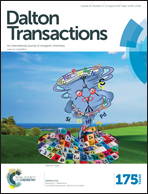A theoretical study on the electronic structures and photophysical properties of phosphorescent Iridium(iii) complexes with –CH3/H and t-Bu substituents†
Abstract
The electronic structures and photophysical properties of the recently reported Ir(III) cyclometallated complexes containing the 2-(1-phenoxy-4-phenyl)-5-methylpyridine ligand (1) were studied via density functional theory and time-dependent density functional theory calculations. To improve the performance and establish the structural–photophysical property relationships, a series of Ir(III) complexes 2–6 with –CH3/H and t-Bu substituents have been designed according to the experimental complex 1. The calculated results demonstrate that the different substituted ligands not only modify the absorption and emission bands, but also enhance the phosphorescent quantum efficiency. The t-Bu substituent increases the energy levels of the LUMO for complexes 4, 5 and 6 and broadens the HOMO–LUMO energy gaps. When compared with 1, the emission wavelengths for 3 and 6 are red-shifted considerably, while they are slightly blue-shifted for 4 and 5. In particular, the –CH3 and t-Bu substituents in 2, 4 and 5 lead to a relatively high quantum yield. Therefore, the designed complexes 2, 4 and 5 with –CH3/t-Bu substituents are expected to be promising phosphorescence emitters with high quantum efficiency.


 Please wait while we load your content...
Please wait while we load your content...